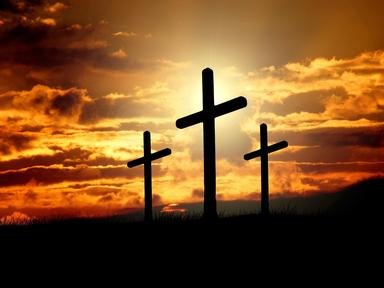10. Joshua and his army of Israelites won a mighty victory in taking the city of Jericho. Unfortunately, which of his men would suffer the punishment of stoning for stealing a fine cloak and precious metals while plundering the city?
From Quiz Stone the Crows -- or People!
Answer:
Achan
"Then Joshua, together with all Israel, took Achan son of Zerah, the silver, the robe, the gold bar, his sons and daughters, his cattle, donkeys and sheep, his tent and all that he had, to the Valley of Achor. Joshua said, "Why have you brought this trouble on us? The Lord will bring trouble on you today." Then all Israel stoned him, and after they had stoned the rest, they burned them. Over Achan they heaped up a large pile of rocks, which remains to this day. Then the Lord turned from his fierce anger" (Joshua 7: 24-26).
It is suggested that Achan received a death sentence for plundering Jericho. The Israelite army suffered losses in their attempt to take the nearby city of Ai. The Lord declared that he had withdrawn his support of the Israelite army because someone within the ranks of the army had committed a crime. Joshua discovered Achan's crime and sentenced him to death by stoning. In the Jewish tradition, it is also suggested that Achan's entire family, children, household, and livestock were subjected to a similar fate.







 = Top 5% Rated Quiz,
= Top 5% Rated Quiz,